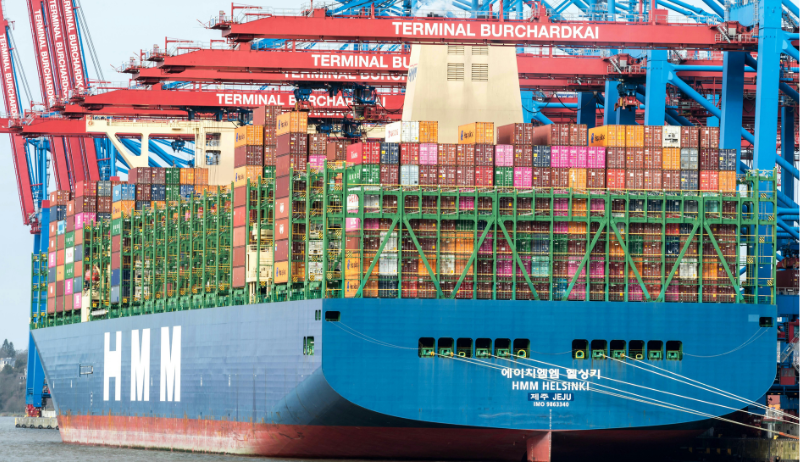Indonesia's Tuna Export Market: Target Countries and Latest Demand Trends
November 22, 2024

Indonesia's Tuna Export Market: Target Countries and Latest Demand Trends
Indonesia is one of the world's leading producers and exporters of tuna, and its tuna export market plays a crucial role in the global seafood industry. With vast ocean resources, a well-developed tuna industry, and a strategic geographic location, Indonesia is well-positioned to meet the growing demand for tuna products worldwide. However, as the global market for tuna continues to evolve, Indonesian exporters must stay informed about the latest demand trends, target countries, and emerging market opportunities.
This article explores the key countries that import Indonesian tuna, the latest trends in global tuna demand, and the opportunities that Indonesian exporters can capitalize on to enhance their presence in the international market.
The Global Tuna Market: A Snapshot
As one of the most popular seafood products worldwide, tuna has a significant presence in global trade. The global tuna market is valued at billions of dollars and continues to grow due to increasing demand for high-quality protein sources, including fresh, frozen, and canned tuna. Tuna is a staple in various cuisines, particularly in Asia, Europe, and the Americas, and is consumed in a variety of forms such as sashimi, sushi, steaks, and canned products.
Indonesia, as one of the top tuna-producing nations, plays a vital role in supplying this high-demand product to international markets. According to industry reports, Indonesia ranks among the top five exporters of tuna globally, with a large share of the market in key regions such as Japan, the European Union, the United States, and increasingly, China. The country’s tuna export industry is supported by its robust fishing infrastructure, compliance with international certifications, and commitment to sustainable fishing practices.
Top Export Destinations for Indonesian Tuna
Indonesia’s tuna export market is diverse, with key countries across Asia, Europe, and North America being the main destinations for its tuna products. Below are the top countries that import Indonesian tuna:
1. Japan
Japan is one of the largest importers of tuna globally and remains a critical market for Indonesian tuna exporters. Tuna is a key component of Japanese cuisine, particularly in the form of sushi, sashimi, and grilled tuna steaks. Japan’s demand for high-quality, fresh tuna is substantial, and Indonesian skipjack and yellowfin tuna are in high demand due to their quality and affordability.
In recent years, Japan’s tuna consumption has remained stable, with a continued preference for premium products. Indonesian exporters can tap into this market by focusing on sustainable and high-quality tuna that meets Japan’s stringent standards for freshness and traceability.
2. United States
The United States is another major market for Indonesian tuna, particularly for canned tuna and frozen tuna products. The U.S. is one of the largest consumers of canned tuna, and Indonesia, with its established tuna processing industry, is a key supplier of canned skipjack tuna to American consumers.
In addition to canned tuna, the demand for fresh and frozen tuna in the U.S. has been rising, particularly in sushi bars and premium restaurants. Indonesian exporters can benefit by offering a range of tuna products, from frozen steaks to high-quality sashimi-grade tuna, and by adhering to food safety regulations set by U.S. authorities.
3. European Union (EU)
The European Union is a significant destination for Indonesian tuna, especially for processed and canned tuna products. The EU market places a strong emphasis on sustainability, and Indonesian tuna exporters that meet sustainability standards such as MSC (Marine Stewardship Council) certification are well-positioned to succeed in this region.
The demand for high-quality, responsibly sourced tuna continues to grow in the EU, particularly in markets like Spain, Italy, and France, where canned tuna is a popular staple. Indonesian exporters can enhance their competitiveness by focusing on eco-friendly packaging, sustainable fishing practices, and high-quality tuna products that cater to the European preference for sustainability.
4. China
China has emerged as a key player in the global seafood market, and its demand for tuna products, particularly skipjack tuna, is on the rise. As China’s middle class continues to expand and consumer preferences shift towards healthier food options, the demand for premium tuna products, including sushi-grade tuna, has grown significantly.
Indonesia’s proximity to China and its strong fishing industry provide an excellent opportunity for exporters to meet this growing demand. With China’s increasing interest in canned and frozen tuna products, Indonesian tuna exporters should focus on expanding their market share in China by leveraging e-commerce platforms and establishing relationships with local distributors.
5. South Korea
South Korea is another important market for Indonesian tuna, especially for high-quality frozen tuna and sashimi-grade products. Tuna is a key ingredient in Korean cuisine, used in dishes such as sushi and poke bowls. As Korean consumers become more health-conscious and willing to pay a premium for high-quality seafood, the demand for fresh and frozen tuna continues to increase.
Indonesia’s tuna exporters can tap into the South Korean market by focusing on premium tuna products, ensuring strict adherence to food safety standards, and working with local distributors to expand their market reach.
Emerging Trends in Tuna Export Demand
As the global tuna market evolves, several key trends are shaping demand for tuna exports, especially for Indonesian producers. Exporters should be aware of these trends to position themselves effectively in the market:
1. Rising Demand for Sustainable and Certified Tuna
Consumers around the world are becoming more conscious of the environmental impact of their food choices. This has led to a growing demand for sustainably sourced tuna, and certifications such as the Marine Stewardship Council (MSC) and Friend of the Sea are increasingly important for accessing key markets, particularly in Europe and North America. Indonesian exporters who adopt sustainable fishing practices and obtain these certifications can tap into the premium segment of the market, where consumers are willing to pay higher prices for certified sustainable products.
2. Increasing Preference for Frozen and Sashimi-Grade Tuna
In many countries, particularly in Japan, South Korea, and the U.S., there is an increasing preference for high-quality sashimi-grade and frozen tuna. As more consumers enjoy sushi, sashimi, and poke bowls, the demand for premium tuna cuts is growing. Indonesian exporters who can provide high-quality frozen and fresh tuna will benefit from this shift in consumer preferences.
3. Growth of E-commerce and Online Seafood Sales
The rise of e-commerce and online grocery shopping has changed the way consumers purchase seafood. In markets like China and the U.S., online seafood sales are growing rapidly, and Indonesian exporters can leverage digital marketing strategies and online platforms to expand their reach. Offering high-quality tuna through online retailers and e-commerce websites can provide Indonesian exporters with a direct channel to reach consumers.
4. Increasing Popularity of Canned Tuna in Emerging Markets
Canned tuna remains one of the most affordable and convenient sources of protein in many markets. As disposable incomes rise in emerging economies, including parts of Southeast Asia and Africa, the demand for canned tuna is expected to increase. Indonesian tuna exporters can benefit from this trend by targeting emerging markets with affordable and high-quality canned tuna products.
Conclusion
Indonesia's tuna export market is poised for growth, with key markets in Japan, the U.S., the EU, China, and South Korea leading the demand. Indonesian tuna exporters can benefit from these trends by focusing on sustainability, product quality, and emerging market opportunities. By adapting to consumer preferences and staying informed about global trends, Indonesian exporters can strengthen their position in the competitive global tuna market.
As global demand for tuna continues to grow, Indonesia's strategic position, high-quality tuna products, and commitment to sustainable fishing practices provide a strong foundation for future success in the tuna export industry.

 English
English Chinese
Chinese